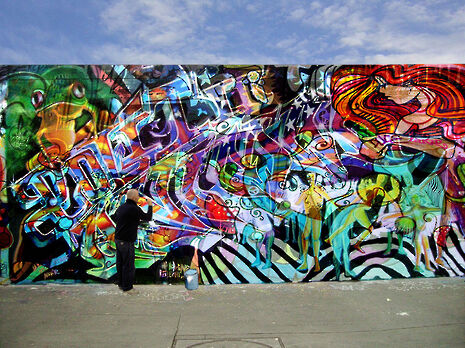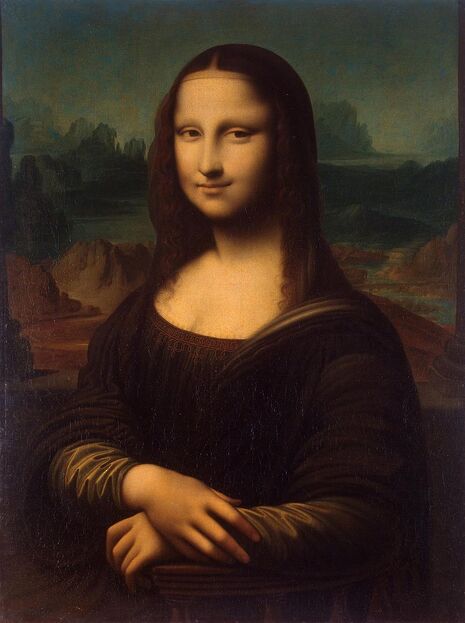Why are we creative?
Sofia Weiss delves into the neuroscience behind human ingenuity in search of what it is that drives us forward

Almost all who have seen it will agree that the Mona Lisa possesses a unique, otherworldly beauty unlike that of any portrait that came before it. In its creation, Da Vinci patented an entirely new artistic technique he named ‘sfumato’, or ‘smoke.’ This portrait is clearly a work of genius, one that towers alongside the music of Mozart and Newton’s laws. These are the grandest manifestations of a trait that has long seemed part of our hard-wiring as humans: the ability to create something new and desirable, the knack of continually improving designs and technologies. In the 21st century, we find examples in the latest zero-emissions cars from Japan and the sleekly engineered spacecraft on NASA’s launchpads. Modern humans are inventors of note; we advance and experiment with creativity constantly.
Just how we came by this capacity to create has been the subject of intense scientific study: after all, we were by no means always such whirlwinds of innovation. While our human lineage emerged in Africa approximately six million years ago, early family members left behind little visible record of invention. Indeed, many argue that it is only in the last 45,000 years that the epochal explosion of creativity seems to have begun. The enigma of our – relatively recent – flashes of creation may be resolved by looking within modern man, specifically, at our brains. After all, it follows that if we are ever to understand creativity in an evolutionary perspective, then we must be able to link the extraordinary painting or inspired insight to the brain structures from which they sprang.

Advances on this front have ‘rough-and-tumbled’ since the advent of modern neuroscience in the 1950s. Initially, studies of split-brain patients leading to the notion that the right hemisphere ‘controlled’ creativity became exceedingly popular, particularly in the public psyche. This model is now considered overly simplistic, with contemporary scientists instead contending that any neurological model of creativity should focus not solely on the artistic outlets attributed to the right brain, but encompass, too, domains more principally localised to the left, such as mathematics and language. In turn, this necessarily involves a dynamic network of brain regions. To this end, recent studies suggest that the temporal and frontal lobes are critical for regulating creative expression, working in tandem not simply to generate ideas, but those that are novel and useful. This is a particularly tempting suggestion, given that the complexity of our frontal lobes is a marked feature of the brain of Homo sapiens, distinguishing us from our more primitive predecessors, as well as our ape cousins.
“Dopamine mediates reward-seeking behaviour and is likely to be involved in creative motivation.”
Invariably, there is interplay with other human brain systems vital for creative expression, many of which are underscored by the molecular mechanisms of our chemistry. It seems that foremost among these are the dopamine pathways of our brain’s emotion factory, the limbic system. Indeed, the emerging modality of fMRI, alongside multiple drug studies, suggests that dopamine mediates reward-seeking behaviour and is likely to be involved in creative motivation.
From an evolutionary perspective, these studies provide a couple of potential insights. First, they take us one step closer to understanding the material basis of creativity, paving the way to one day fully clarifying those ‘Eureka!’ moments in which the cortices divulge their secrets. Second, they begin to unravel some of reasons as to why it was that one species of ape happened to turn into a planet dominator. As with many quests in science, many questions and answers remain to be resolved. In the meantime, we continue with our business of ingenuity.
 News / Fitz students face ‘massive invasion of privacy’ over messy rooms23 April 2024
News / Fitz students face ‘massive invasion of privacy’ over messy rooms23 April 2024 News / Climate activists smash windows of Cambridge Energy Institute22 April 2024
News / Climate activists smash windows of Cambridge Energy Institute22 April 2024 News / Copycat don caught again19 April 2024
News / Copycat don caught again19 April 2024 Comment / Gown vs town? Local investment plans must remember Cambridge is not just a university24 April 2024
Comment / Gown vs town? Local investment plans must remember Cambridge is not just a university24 April 2024 News / Cambridge University disables comments following Passover post backlash 24 April 2024
News / Cambridge University disables comments following Passover post backlash 24 April 2024





